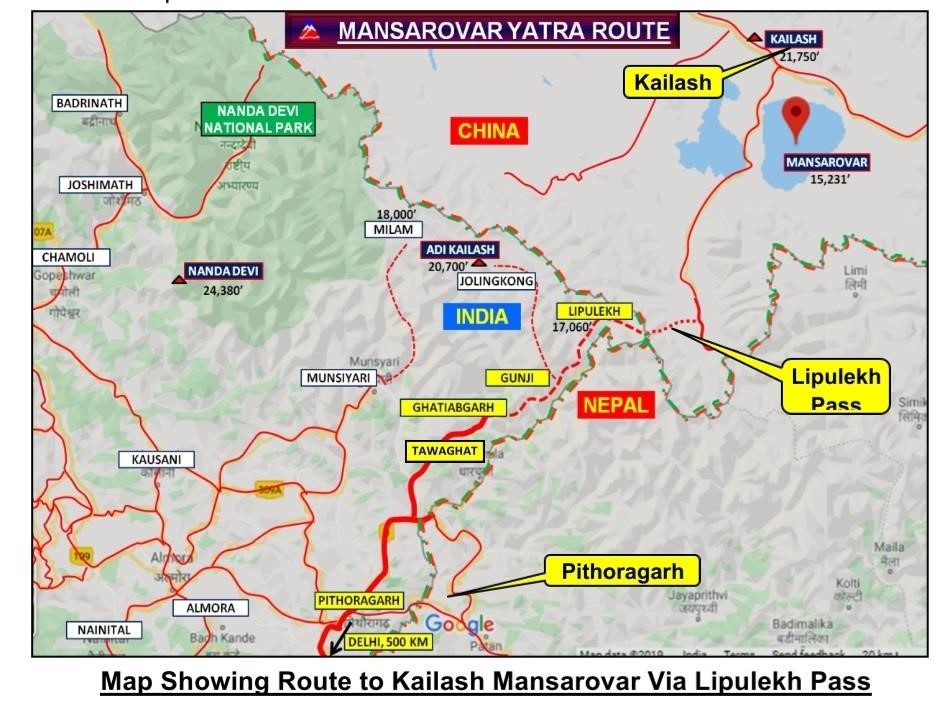9th May 2020 Current Affairs in English

9th May 2020 Current Affairs in English – Today Current affairs PDF link available below.
Dear Aspirants, we (Vetripadi.com team) have come with Daily Current affairs analysis. It is prepared to crack the various competitive exams. We are here to make sure your preparation easy. We will update the current affairs every day. It will help for both preliminary and mains (facts oriented with background information) for your preparation. We need you support.
VETRIPADI Daily Newsletter
வெற்றிப்படி.காம் | வெற்றிக்கு நீ படி!!!
Daily Current affairs for Competitive
Exams ( UPSC, TNPSC, SSC)
9th MAY 2020
TABLE OF CONTENTS
- 103 deaths, 3,390 new cases in a day; recovery rate hits 29.36%
- Suspend labour laws for 2-3 years, employers’ associations urge government
- NGT directs LG Polymers India to deposit ₹50 crore
- Rajnath Singh inaugurates new road to Kailash Mansarovar
- Eradicate it: On female genital mutilation
- Contempt for labour: On dilution of labour laws
- Slower growth and a tighter fiscal
1. 103 deaths, 3,390 new cases in a day; recovery rate hits 29.36%
Information in News
- Indian Council of Medical Research (ICMR) has initiated a multi-centre clinical trial called PLACID trial “Phase-II Open-Label, Randomised Controlled Trial to assess the safety and efficacy of Convalescent Plasma to Limit COVID-19 associated complications in moderate disease”.
- The study has received approval from the COVID-19 National Ethics Committee (CONEC) on April 29.
- ICMR has shortlisted 21 institutes for PLACID trial.
- These include five hospitals in Maharashtra; four in Gujarat; two each in Rajasthan, Tamil Nadu, Madhya Pradesh and Uttar Pradesh; and one each in Punjab, Karnataka, Telangana and Chandigarh.
Multicenter research trial
- A multicenter research trial is a clinical trial conducted at more than one medical center or clinic. Most large clinical trials, particularly Phase III trials, are conducted at several clinical research centers.
- Benefits
- The benefits of multicenter trials include a larger number of participants, different geographic locations, the possibility of inclusion of a wider range of population groups, and the ability to compare results among centers, all of which increase the generalizability of the study.
- In many cases, efficacy will vary significantly between population groups with different genetic, environmental, and ethnic or cultural backgrounds (“demographic” factors); normally only geographically dispersed trials can properly evaluate this.
ICMR (The Indian Council of Medical Research)
- The Indian Council of Medical Research (ICMR), New Delhi, the apex body in India for the formulation, coordination and promotion of biomedical research through intramural as well as extramural research, is one of the oldest medical research bodies in the world.
- IRFA (Indian Research Fund Association) established in 1911was redesignated as the Indian Council of Medical Research (with Dr. C.G. Pandit as its first Director).
- IRFA was registered as a local body not administered by the Government on March 22, 1938 under the Government of India Act No. XXI of 1860.
- The ICMR is funded by the Government of India through the Department of Health Research, Ministry of Health & Family Welfare.
- The Governing Body of the Council is presided over by the Union Health Minister. It is assisted in scientific and technical matters by a Scientific Advisory Board comprising eminent experts in different biomedical disciplines.
- The Board, in its turn, is assisted by a series of Scientific Advisory Groups, Scientific Advisory Committees, Expert Groups, Task Forces, and Steering Committees etc. which evaluate and monitor different research activities of the Council.
2. Suspend labour laws for 2-3 years, employers’ associations urge government
Information in News
- Among the suggestions given by the employers’ associations were relaxation of the Industrial Disputes Act in order to treat the lockdown period as lay-off, treating wages paid during this period as corporate social responsibility (CSR) funding, increasing the maximum workforce to 50% from 33% upon reopening and suspending labour laws, except those governing minimum wages, bonus and statutory dues, for two to three years.
- The employers’ representatives also said working hours should be increased to 12 hours a day and the industries be given an appropriate package to ensure no job losses.
- This discussion comes in the wake of some State governments amending labour laws or suspending them altogether.
- The Uttar Pradesh government has brought an ordinance to exempt industries from several labour laws for 1,000 days and the Gujarat government has raised working hours from eight to 12 hours a day. These steps have been widely criticised by trade unions.
3. NGT directs LG Polymers India to deposit ₹50 crore
Information in News
- The National Green Tribunal (NGT) directed LG Polymers India to deposit an initial amount of ₹50 crore for the damage caused by the gas leakin Visakhapatnam.
- A bench headed by NGT Chairperson Justice Adarsh Kumar Goel also issued notice to the Andhra Pradesh Pollution Control Board, Central Pollution Control Board and the Union Environment Ministry, seeking their response on the incident by May 18.
- The green panel also constituted a five-member fact-finding committee, to be headed by a former A.P. High Court judge, to probe the incidentand furnish a report to the tribunal.
- The directions came after the green panel took suo motu cognisance of the gas leak incident that left at least 11 people dead and affected several others.
- Styrene gas is a hazardous chemical and as per rules, it requires on-site and off-site emergency plans to ensure prevention of damage.
- The National Crisis Management Committee (NCMC) chaired by Cabinet Secretary Rajiv Gauba to review the situation arising out of the gas leak.
Suo moto
- Suo moto is a Latin term meaning “on its own motion“. It is used in situations where a government or court official acts of its own initiative.
For Reference
NGT – National Green Tribunal
http://vetripadi.com/national-green-tribunal-and-ngt-act-2010-national-environmental-organisation/
4. Rajnath Singh inaugurates new road to Kailash Mansarovar
Information in News
- A new 80-km road in Uttarakhand which connects close to the Line of Actual Control (LAC).
- It opens a new route for Kailash Mansarovar yatra via Lipulekh Pass.
- The Border Roads Organisation (BRO) achieved road connectivity from Dharchula to Lipulekh (China Border) known as Kailash-Mansarovar Yatra Route.
- Also flagged off a convoy of vehicles from Pithoragarh to Gunji through video conferencing. Pitharogarh is 490 km from Delhi.
Significance
- It is the shortest and cheapest route with just one-fifth distance of road travel as compared to others.
- There is no air travel involved and majority of the travel, 84%, is in India and only 16% in China compared to other routes where 80% road travel is in China.
- Also, except for a 5-km trek on the Chinese side across Lipulekh Pass, the complete travel will now be on vehicles. So, a five-day trek will reduce to two days of road travel. To and fro, six days are likely to be saved.
- Lipulekh pass at 17,000 feet is close to the tri-junction of India, China and Nepal.
Ghatiabgarh to Lipulekh
- The new 80 km-long Greenfield road from Ghatiabgarh to Lipulekh was made under directions of the China Study Group (CSG).
- It is funded by Indo-China Border Road (ICBR) and is scheduled to be completed by December 2022.
- This road was approved by the Cabinet Committee on Security (CCS) in 2005 at a cost of ₹80.76 crore and in 2018 the cost was revised to ₹439.40 crore.
Lipulekh pass
- Lipulekh pass in Pithoragarh district of Uttarakhand. Lipulekh pass connects the Kumaon region of Uttarakhand with the old trading town of Taklakot in Tibet. The pass is first Indian border post to be opened for trade with China in 1992.

5. Eradicate it: On female genital mutilation
Information in News
- Sudan’s decision to end the practice of female genital mutilation (FGM).
- It is a landmark victory for women’s rights in a country that is still in a transition from dictatorship to democracy.
- The development follows the transitional government’s decision to scrap the repressive social codes and humiliating penalties that targeted women during the nearly 30-year dictatorship of Omar al-Bashir, which fell last year amid protests.
- The new measure, which entails punishment with a fine and a prison sentence.
- The UN estimates that some 87% of Sudanese women have had their external genitalia removed on non-medical grounds during childhood, leaving them with life-long emotional and physical injuries.
- According to the UN, over 200 million women in several African countries, including Sudan, Egypt, Nigeria, Djibouti and Senegal, and some in Asia, have been subject to this brutal social custom.
Way Forward
- These practices suggest that legislation alone may not stop this practice that has deep cultural roots.
- The government has to eradicate it.
- Sustaining the country’s progressive currents and democratic transition would be crucial to consolidate the gender reforms it has introduced in recent months.
6. Contempt for labour: On dilution of labour laws
Information in News
- Centre should not allow exemptions from welfare laws for workers mooted by States.
- But, it is amoral and perverse on the part of some States to address this need by granting sweeping exemptions from legal provisions aimed at protecting labourers and employees in factories, industries and other establishments.
- Madhya Pradesh allowing units to be operated without many of the requirements of the Factories Act working hours may extend to 12 hours, instead of eight, and weekly duty up to 72 hours.
- State has used Section 5 of the Act, which permits exemption from its provisions for three months, in the hope that the Centre would approve such suspension for at least a thousand days.
- However, this exemption can be given only during a ‘public emergency’, defined in a limited way as a threat to security due to war or external aggression.
- Uttar Pradesh has approved an ordinance suspending for three years all labour laws, save a few ones relating to the abolition of child and bonded labour, women employees, construction workers and payment of wages, besides compensation to workmen for accidents while on duty.
- Changes in the manner in which labour laws operate in a State may require the Centre’s assent.
Present Concern
- The most egregious aspect of the country’s response to the pandemic was its inability to protect the most vulnerable sections and its vast underclass of labourers from its impact.
- Why else would a government relieve factories of even elementary duties such as providing drinking water, first aid boxes and protective equipment? Or suspend requirements such as cleanliness, ventilation, lighting, canteens, restrooms and crèches?
7. Slower growth and a tighter fiscal
Information in News
- India’s growth prospects for 2020-21 ranging from 0.8% (Fitch) to 4.0% (Asian Development Bank).
- This wide range indicates the extent of uncertainty and tentative nature of these forecasts.
- The International Monetary Fund (IMF) has projected India’s growth at 1.9%, China’s at 1.2%, and the global growth at (-) 3.0%.
- The actual growth outcome for India would depend on: the speed at which the economy is opened up; the time it takes to contain the spread of virus, and, the government’s policy support.
- In 2019-20, there was a contraction in the Centre’s gross tax revenues in the first 11 months during April 2019 to February 2020, at (-) 0.8%. These trends continue to beset the Indian economy in this crisis.
Growth Prospect with Gross value added (GVA)
- Examine the growth prospects for 2020-21 from the output side, making reference to real gross value added (GVA). In 2019-20, which would serve as the base year, India may show GVA growth of about 4.4%, well below the Central Statistics Office’s second advance estimate of 4.9%, as the fourth quarter number is likely to be revised downwards on account of the adverse impact of the virus on economic activities.
- The IMF’s GDP growth estimate for 2019-20 is at 4.2%.
- GVA is divided into eight broad sectors. Although all sectors have been disrupted, some may be affected less than the others. We divide the output sectors in four groups.
Monetary policy support
- Monetary policy initiatives undertaken so far include a reduction in the repo rate to 4.4%, the reverse repo rate to 3.75%, and cash reserve ratio to 3%.
- The Reserve Bank of India has also opened several special financing facilities.
- These actions will have a positive impact on output only after the lockdown is lifted.
- Although industry has been clamouring for a large fiscal stimulus, cash-constrained central and State governments have taken expenditure reducing measures by announcing a freezing of enhancements of dearness allowance and dearness relief. This may result in savings of ₹37,000 crore for the Centre and about ₹82,000 crore for the States, together amounting to 0.6% of
- There is also a talk of substantially reducing non-salary defence
- With lower petroleum prices, fertilizer and petroleum subsidies may be reduced.
- These expenditure cuts are contemplated to keep the fiscal deficit under some control.
On fiscal deficit
- Fiscal stimulus can be of three types:
- Relief expenditure for protecting the poor and the marginalised;
- Demand-supporting expenditure for increasing personal disposable incomes or government’s purchases of goods and services, including expanded health-care expenditure imposed by the novel coronavirus.
- Bailouts for industry and financial institutions.
Centre Support
- The Centre had earlier announced a relief package of ₹1.7-lakh crore of which the additionality was only ₹65,000 crore, since it included a frontloading of the budgeted expenditures.
- The Centre’s budgeted fiscal deficit of 3.5% of GDP may have to be enhanced substantially to make up for the shortfall in budgeted revenues; account for a lower than projected nominal GDP for 2020-21, and provide for a stimulus.
- Thus, the Centre’s fiscal deficit may increase to 6.0% of GDP.
- Expenditure on construction of hospitals, roads and other infrastructure and purchase of health-related equipment and medicines require prioritisation.
- These expenditures will have high multiplier effects.
- Similar initiatives may be undertaken by the State governments which may also enhance their combined fiscal deficit to about 4.0% of GDP to account for 3.0% of GDP under their respective Fiscal Responsibility Legislation/Law and to provide for the shortfall in their revenues and some stimulus.
- Financing of the fiscal deficit poses a major challenge this year.
PDF Download Here

